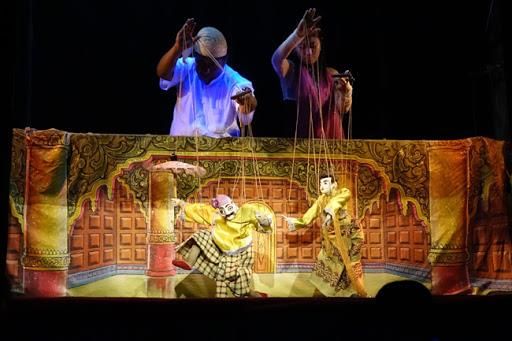Nitin Singhania Summary: Indian Puppetry | Nitin Singhania: Indian Art & Culture (Summary & Tests) - UPSC PDF Download
Introduction
- Ancient form of entertainment.
- One of the most ingenious inventions of mankind.
Indian Origin
- For entertainment and educational purposes.
- Excavation sites at Harappa & Mohenjo-Daro- puppets with sockets attached to them found.
- Around 500 B.C- references of marionette theatre found.
 Marionette Theatre
Marionette Theatre - Oldest written reference to puppetry- Tamil classic Silappadikaram (written around 1st & 2nd century B.C.)
- It has been of philosophical importance in Indian culture.
- Bhagwata, describes God as a puppeteer, controlling the universe with the three strings - Satta, Raja & Tama. In Indian theatre, narrator was called Sutradhar or ‘holder of strings’.
- Variety of puppetry traditions have developed ill various parts across India but lack of devoted audience and financial security has led to a steady decline of this art form in modern times.
Puppetry in India can be classified into four categories as follows:
1. String puppet
- Kathputli
- Kundhei
- Gombeyatta
- Bommalattam
2. Shadow puppet
- Tholu Bommalata
- Ravanchhaya
- Togalu Gombeyatta
3. Glove puppet
- Pavakoothu
4. Rod puppet
- Yampuri
- Putul Nach
➢ String Puppets
(a) Important Features
- Puppets are 8-9 inch miniature figures chiselled out of wood.
- Oil colour is used to paint the wood.
- Small wooden pipes used to form limbs.
- Body is covered with colourful miniature dress and stitched.
- Miniature jewellery and other accessories are also used.
- Strings are attached to small holes in the hands, head and back of the body
(b) Popular Examples
(i) Kathputli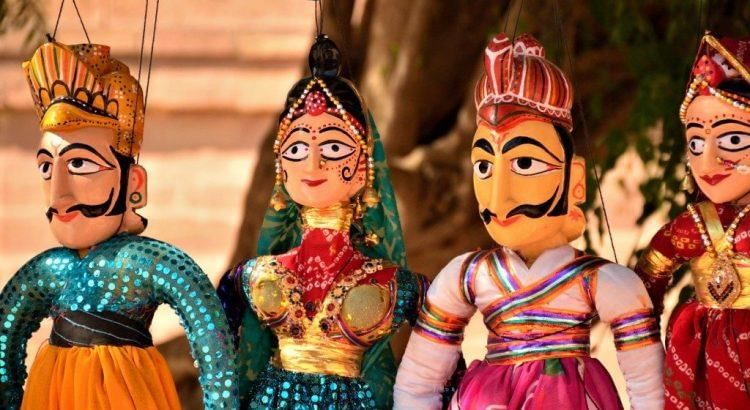 Kathputli
Kathputli
- Traditional string puppets of Rajasthan.
- ‘Kath’ means wood & ‘putli’ means doll.
- Covered in traditionally bright Rajasthani dress.
- Accompanied by dramatic folk music.
- Unique feature- Absence of legs.
(ii) Kundhei
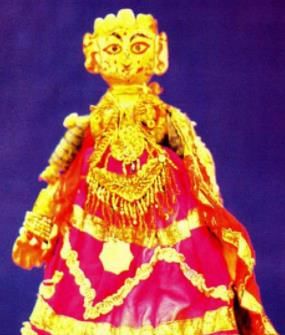 Kundhei
Kundhei
- String puppets of Odisha.
- Made of light wood & are dressed in long skirts.
- Have more joints, thus more flexibility.
- Strings attached to a triangular prop.
- Marked influence of Odissi on these shows.
(iii) Gombeyatta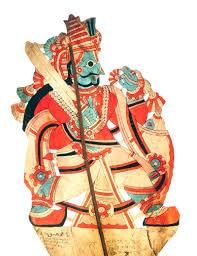 Togalu Gombeyatta
Togalu Gombeyatta
- Karnataka
- Styled on various characters of Yakshagana theatres.
- Unique feature- more than one puppeteer is used.
(iv) Bommalattam
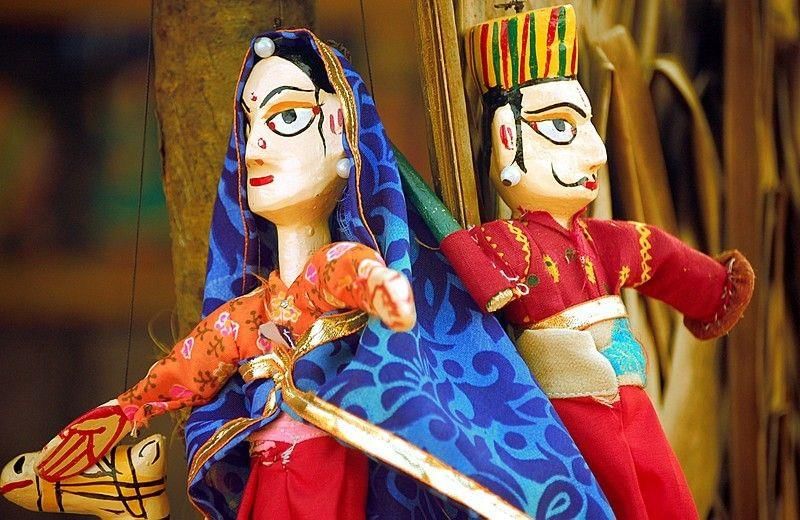 Bommalattam
Bommalattam
- Tamil Nadu
- Combines features of rod and string puppetry.
- Strings attached to an iron ring, worn by puppeteer on his head.
- These are the largest & heaviest marionettes found in India.
- These could be as large as 4.5 ft in height & 10 kg in weight.
- Four distinct stages - Vinayak Puja, Komali, Amanattam & Pusenkanattam.
1. The narrator is called sutradhar
2. Kathputli is a string puppet
Which of the above is/ are correct?
➢
Shadow Puppets
- Has survived till now.
(a) Important Features
- These are flat figures cut out of leather.
- Painted identically on both sides of the leather.
- Placed on a white screen with light falling from behind, creating a shadow on the screen.
- Figures are manipulated so that the silhouettes created on the blank screen create telling imagery.
(b) Popular Examples
(i) Togalu Gombeyatta
- Karnataka
- Unique feature - Variation of puppet size based on social status, i.e. kings &religious figures are large puppets while common people & servants are smaller puppets.
(ii) Ravanachhaya Ravanachhaya
Ravanachhaya
- Most theatrical of shadow puppetry.
- Odisha
- Made of deerskin & depict bold, dramatic postures.
- Do not have any joints attached to them, making it complex.
- Use of non-human puppets like trees & animals.
- Ravanchhaya artists- create a lyrical & sensitive theatrical narration.
(iii) Tholu Bommalata Tholu Bommalata
Tholu Bommalata
- Andhra Pradesh
- Accompanied by classical music.
- Themes- mythological & devotional tales of epics and Puranas.
- Puppets are larger in size & coloured on both sides.
➢
Glove Puppets
➢
(a) Important Features
- Also known as sleeve, hand or palm puppets.
- Small figures with head & arms wearing a long, flowing skirt.
- Made of cloth or wood, but variations of paper puppet also seen.
- Puppeteer wears puppet as glove, manipulating the head with his index finger.
- Two hands are manipulated using thumb & middle finger - giving life and expression to originally limp puppets.
- Accompanied by rhythmic beats of drum or dholak.
(b) Popular Examples
(i) Pavakoothu
- Kerala
- Origin- 18th century A.D.
- Decorated with colourful headgears, feathers & face paints, which depicts heavy influence of Kathakali.
- Themes: Ramayana & Mahabharata.
➢
➢
Rod Puppets
(a) Important Features
- Larger variations of glove puppet.
- Controlled by rods.
- Popular in Eastern India.
(b) Popular Examples
(i) Yampuri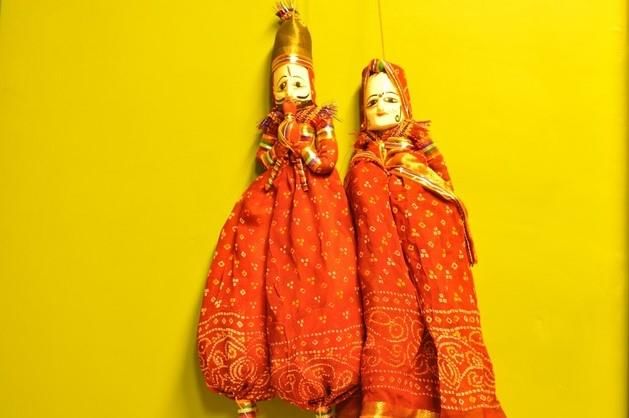 Yampuri
Yampuri
- Bihar
- Made of wood & are without joints.
- Carved out of a single piece of wood & painted and dressed in bright colours.
(ii) Putul Nach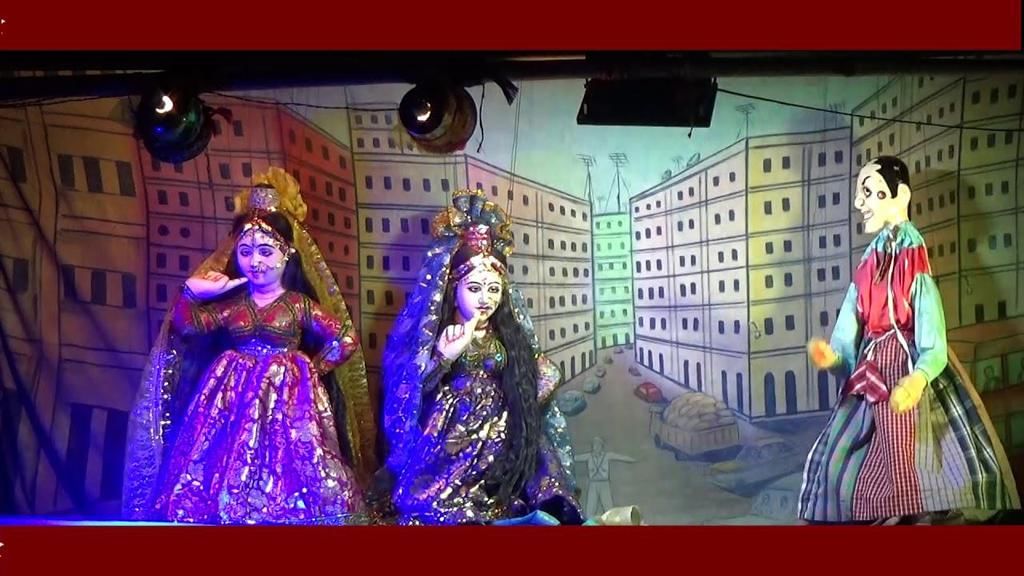 Putul Nach
Putul Nach
- Bengal-Odisha-Assam region.
- 3-4 ft. high & dressed like characters of Jatra.
- Have three joints - at neck & at the shoulders.
- Each puppeteer controls a single puppet by means of a rod attached to his waist. He moves around behind the curtain, imparting similar movements to puppets.
- Accompanied by musical troop of 3-4 musicians playing harmonium, cymbals & tabla.
|
19 videos|43 docs|26 tests
|
FAQs on Nitin Singhania Summary: Indian Puppetry - Nitin Singhania: Indian Art & Culture (Summary & Tests) - UPSC
| 1. What is Indian puppetry? |  |
| 2. How old is Indian puppetry? |  |
| 3. What are the different types of Indian puppetry? |  |
| 4. What are the techniques used in Indian puppetry? |  |
| 5. What is the significance of Indian puppetry? |  |
|
19 videos|43 docs|26 tests
|

